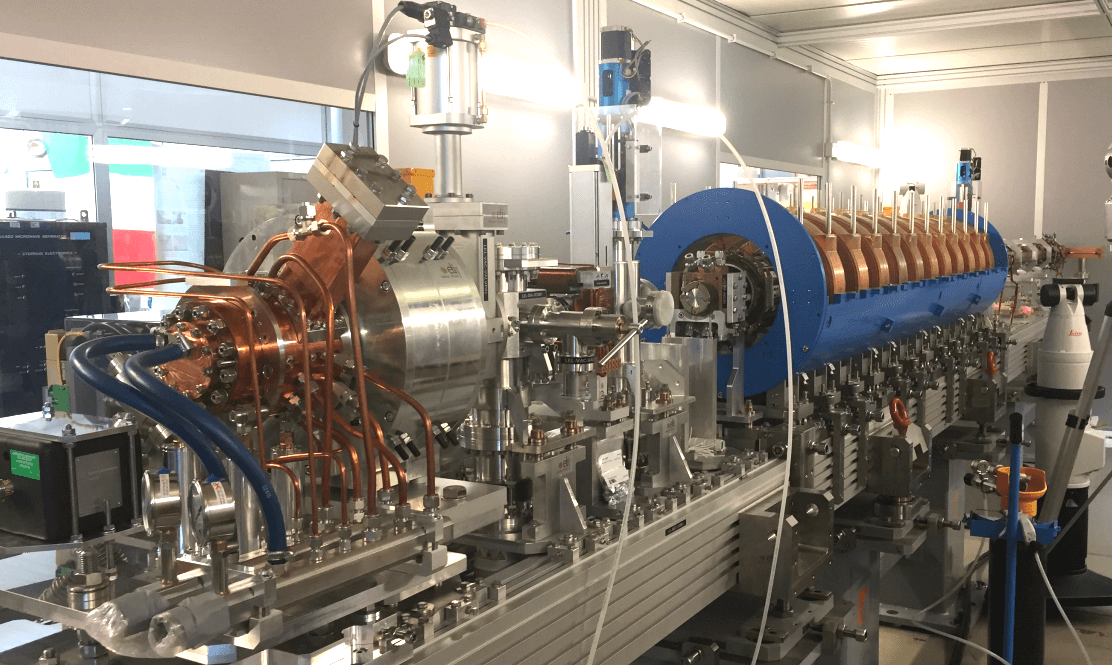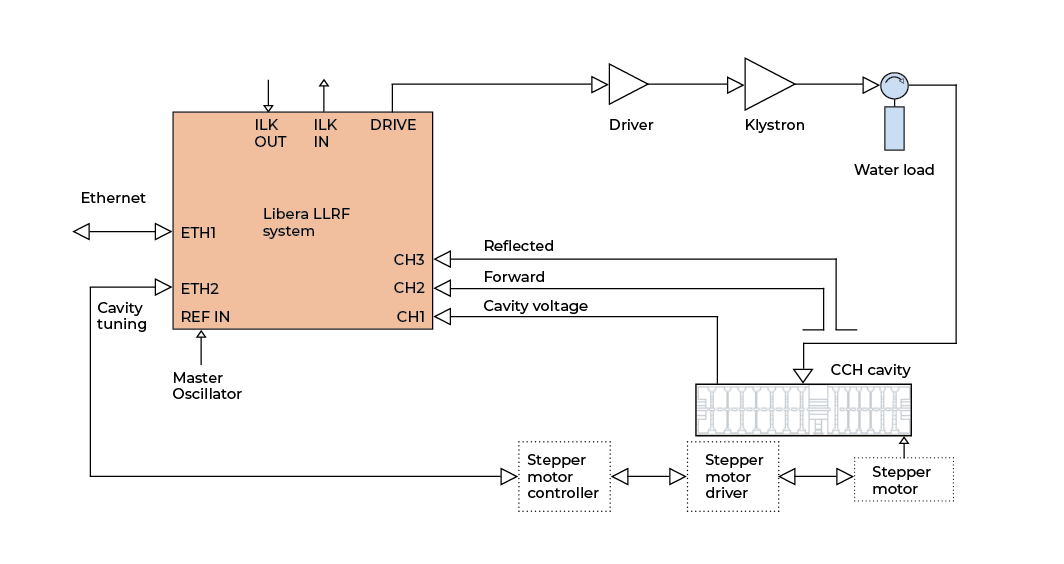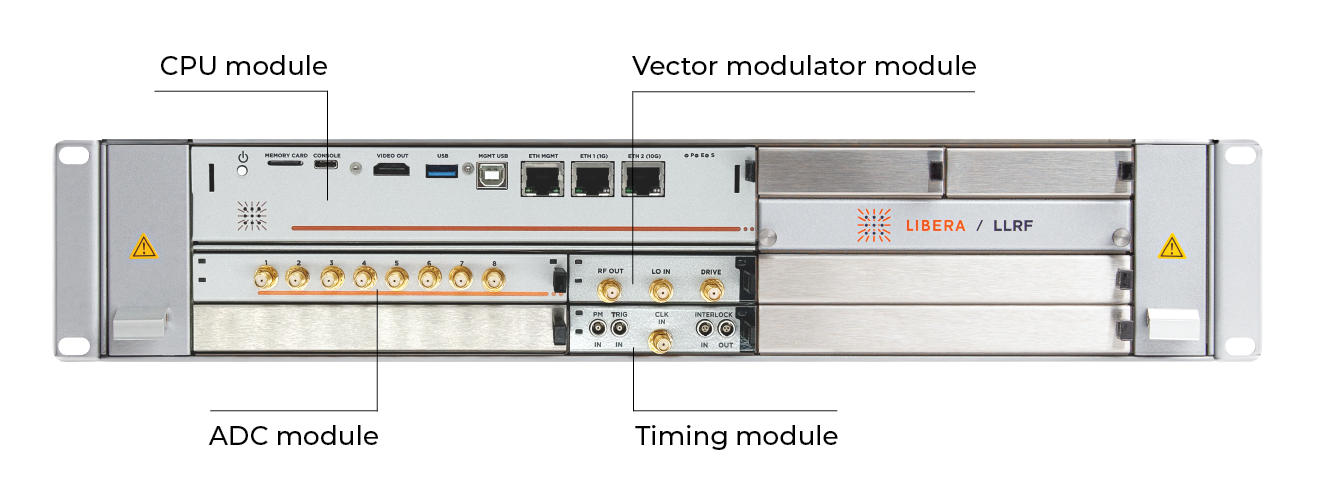Can’t find your discipline or profession? Write to us and we’ll
do our best to work something out.
Every project is unique.
We adjust our services to your needs.
LLRF system has a key role in the overall performance of a particle accelerator since it is responsible for the accurate control of electromagnetic field amplitude and phase inside the accelerating structures. It has therefore a crucial impact on beam quality. Instrumentation Technologies provides state-of-the-art LLRF solutions tailored on customer needs.

Benefits:
Data processing:
Libera LLRF, the industrial digital RF stabilization system, offers a unique combination of hardware, real-time digital signal processing and software. The system continuously tracks the RF system signals and applies a feedback RF signals to it.
In the figure below, a possible configuration of Libera LLRF is presented. Libera LLRF tracks the cavity voltage (probe) signal and according to it applies a control drive signal to the cavity through the RF system power amplifiers. Further diagnostics on directional coupler forward and reflected signals enable Libera LLRF to measure cavity resonant frequency and therefore act on the cavity tuning system through stepper-motors or other equivalent tuning devices.

Some Libera LLRF features:
Interfaces:

Implements functions of the µTCA Carrier Hub (MCH) with interfaces: 2x PCIe, 2x LXI, JTAG, RS-232, DVI, management USB, management ETH, USB and 2x ETH. A fast PCIe bus is used for the data transfer between COM Express module and AMC application boards. This solution supports the implementation of low-latency control algorithms, real-time data processing and dedicated RF system diagnostics tools.
Double width mid-size AMC modules can process up to 8 RF inputs. The Libera LLRF system is configurable and can host from one to maximum four such modules. A Libera LLRF receiver module includes a calibration system and a LO distribution. The FPGA mounted on the board is used for hardware control and digital signal processing.
Single width mid-size AMC module with two RF inputs and two RF outputs. The two inputs can be used in feedback. One of the two RF outputs is used for the drive signal generation. The FPGA mounted on the board is used for hardware control and digital signal processing.
Single width mid-size AMC module. Generates a low jitter local oscillator (LO) signal and a suitable sampling clock for the down-conversion and acquisition processes.
Provide the possibility to add additional features to the Libera LLRF system.
The Libera LLRF system architecture is based on PCIe implemented on AMC standards. It is a user-friendly network-attached device that has a powerful computational interconnect board (ICB) managing a number of satellite boards.
This product runs on Libera BASE.
Learn more about it by clicking here.
| Amplitude stability | < 0.01% RMS |
| Phase stability | < 0.01° RMS |
| Latency (Input -> Drive output) | Down to 250 ns |
| Long-term temperature stability with temperature stabilized RF front-end | < 100 fs RMS / 72 hours |
Libera LLRF is used at the following labs:
Can’t find your discipline or profession? Write to us and we’ll
do our best to work something out.
We adjust our services to your needs.